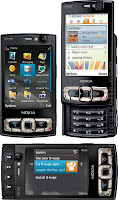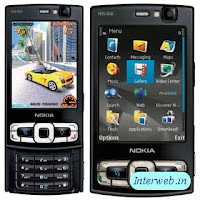
Design:
* Pick your colours: Canvas White with Light Sea Blue, Espresso Brown and Olive Green, Seal Grey with White, Espresso Brown and Coral Red or Petrol Black with Dark Grey, Steel Grey and Deep Plum.
* Change the colour of the cover and watch the screen theme change to match.
* Hold the device sideways and the display goes widescreen.
Sharing & Internet:
* Connect to your friends, feeds and favourites.
* Email and send text and multimedia messages.
* Browse the internet on the full web browser.
* Upload and share your photos and videos.
Photography:
* Take sharp photos with the 5 Megapixel camera with auto-focus, flash and Carl Zeiss optics.
* Automatically tag your photos to the location.
* Upload your photos and share on Ovi.
Navigation:
* Find places to meet with the A-GPS receiver.
* Explore new places with the Nokia Maps application.
* Get a voice-guided navigation trial license for free.
Music:
* Download, transfer and manage your favourite music.
* Listen with the built-in stereo speakers or the included Nokia Stereo Headset.
* Play music wirelessly on your car stereo with the integrated FM transmitter.
Gaming:
* Get all the hottest games with superb graphics with N-Gage™.
* Take on other players in the N-Gage™ arena.
* Try new games for free and buy the ones you like.*
Video:
* Record DVD-like quality videos of you and your friends.
* View your personal and downloaded videos on the full screen.
* Browse your videos by category or keyword search.
* Transfer your videos easily from your PC.
* Upload your videos and share on Ovi.
Applications:
* Enhance your device with a wide range of applications.
* Transfer your contacts, calendar and to-do lists from your computer.
* Synch to your compatible home stereo over the air.
Buy Nokia E79 Phone
The above feature given by Nokia. To know more feature of this mobile visit Nokia.com






